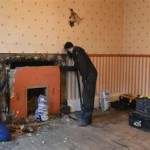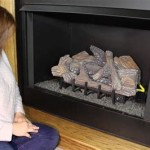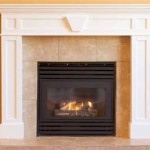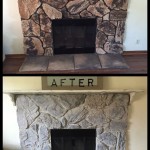Enhancing Outdoor Fireplaces with Lava Rocks: A Comprehensive Guide
Outdoor fireplaces provide warmth, ambiance, and a focal point for outdoor living spaces. A crucial element in achieving an effective and aesthetically pleasing outdoor fireplace is the choice of filler material. Among the various options available, lava rocks have emerged as a popular and highly effective choice. This article explores the benefits, types, and considerations associated with using lava rocks in outdoor fireplaces.
Lava rocks, also known as volcanic rock, are formed from solidified molten lava. Their porous structure allows them to absorb and retain heat, providing a consistent and even distribution of warmth. This porosity also contributes to their lightweight nature, making them relatively easy to handle and install. Beyond their functional attributes, lava rocks offer a natural and visually appealing aesthetic that complements a variety of outdoor fireplace designs.
Benefits of Utilizing Lava Rocks
There are several compelling reasons to choose lava rocks for an outdoor fireplace. First and foremost is their heat retention capability. The porous nature of lava rocks allows them to absorb and radiate heat efficiently, contributing to a more consistent and comfortable warming experience. This efficient heat distribution reduces hot spots and ensures that the heat is spread evenly across the fireplace area. Secondly, lava rocks have a long lifespan. They are naturally durable and resistant to weathering, erosion, and high temperatures. Unlike artificial alternatives, lava rocks do not melt, crack, or degrade significantly over time, even with frequent use. This longevity makes them a cost-effective choice in the long run.
Another key benefit of lava rocks is their low maintenance requirements. They do not require frequent cleaning or replacement. Occasional inspection and removal of debris are generally sufficient to keep them in good condition. Their porous surface helps to naturally ventilate and dissipate moisture, preventing the buildup of mold or mildew. Moreover, lava rocks are environmentally friendly. They are a natural product derived from volcanic activity and do not contain any harmful chemicals or additives. They are also readily recyclable, minimizing their environmental impact at the end of their lifespan.
Furthermore, lava rocks contribute to enhancing the flame appearance. When used in gas fireplaces, lava rocks provide a surface for the flames to dance around, creating a more realistic and visually appealing fire. They add depth and dimension to the flames, making them appear fuller and more vibrant. They also help to reduce the visibility of gas burners, creating a more natural and authentic fire experience.
Types of Lava Rocks and Their Characteristics
While all lava rocks share common characteristics, there are variations in their size, shape, color, and density. These differences can impact their performance and aesthetic appeal. The most common types include lava rock granules, lava rock nuggets, and lava rock boulders. Lava rock granules are small, pea-sized pieces that are typically used as a base layer or filler material. They provide excellent drainage and airflow. Lava rock nuggets are larger, irregularly shaped pieces that offer a more natural and rustic look. They are often used as the primary filler material in gas fireplaces and fire pits.
Lava rock boulders are the largest type and are typically used for decorative purposes around the fireplace. They can be strategically placed to create a visually appealing focal point and add a sense of grandeur to the outdoor space. The color of lava rocks can range from black and dark gray to red and brown. The color is determined by the mineral composition and the oxidation process that occurred during their formation. Black lava rocks tend to absorb more heat and create a more dramatic contrast with the flames, while red lava rocks offer a warmer and more earthy aesthetic.
The density of lava rocks can also vary. Denser rocks tend to retain heat for longer periods but may also be heavier and more difficult to handle. Less dense rocks are lighter and easier to install but may not retain heat as effectively. The choice of lava rock type should be based on personal preferences, the size and design of the fireplace, and the desired aesthetic.
Considerations When Using Lava Rocks in Outdoor Fireplaces
Proper placement and ventilation are crucial factors when utilizing lava rocks in outdoor fireplaces. Overcrowding the fireplace with lava rocks can restrict airflow and reduce the efficiency of the flame. It is important to leave sufficient space for air to circulate around the rocks, ensuring a consistent and even burn. The rocks should be arranged in a way that allows the flames to reach all surfaces, maximizing their heat retention capabilities.
For gas fireplaces, it is essential to ensure that the gas burner is properly positioned and covered with lava rocks. The burners should be completely concealed, but not completely smothered. This will help to prevent hot spots and ensure that the flames are evenly distributed across the fireplace. It is also important to avoid placing large or heavy rocks directly on top of the burner, as this can damage the burner and impede the flow of gas.
Maintaining the cleanliness of lava rocks is important for optimal performance and longevity. Over time, lava rocks can accumulate soot, dust, and other debris. This can reduce their heat retention capabilities and affect their appearance. Regular cleaning is recommended to remove any buildup and maintain their performance. This can be done by simply hosing down the rocks with water or by using a mild detergent and brush. It is important to allow the rocks to dry completely before placing them back in the fireplace.
Finally, selecting the appropriate amount of lava rock for the fireplace is crucial. Too little lava rock will result in inefficient heat distribution and an unimpressive flame appearance. Too much rock can restrict airflow and potentially damage the gas burner. The ideal amount of lava rock will depend on the size and design of the fireplace. It is generally recommended to consult the manufacturer's instructions or seek professional advice to determine the appropriate quantity of lava rock for a given fireplace model. This ensures optimal performance, safety, and aesthetic appeal.

Fire Pit Media Lava Rock Glass Woodlanddirect Com

Modern Fire Pits Toppings Part 2 The Options Firepits

Lava Rock 10 Things To Know About Fire Pit Rocks Buyer S Guide 2024

Sunnydaze Outdoor 30 Cast Stone Propane Gas Fire Pit With Lava Rocks

Red Lava Rock 3 4 Volcanic For Fire Pits Amp Fireplaces 10 Pounds Com

Lava Rock 10 Things To Know About Fire Pit Rocks Buyer S Guide 2024

Elementi Boulder Round Concrete Fire Pit Table Surplus

Fire Pit Lava Rocks In 10 Lb Bags

Red Lava Rock 3 4 Volcanic For Fire Pits Amp Fireplaces 10 Pounds Com

Buy Precast Concrete Fire Pits Diamond Glass
Related Posts








